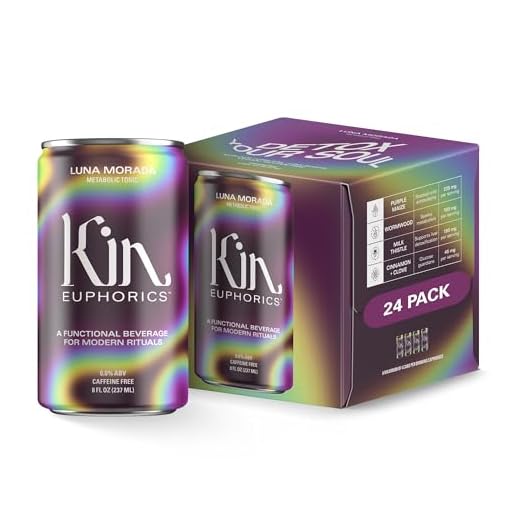



Consuming this particular fermented beverage can lead to noticeable changes in your digestive output. While occasional darkening may not be alarming, it is essential to monitor these changes to ensure they are not indicative of underlying health issues.
When you enjoy a glass of this rich libation, compounds such as tannins and pigments can interact with the digestive system. These interactions may result in altered coloration of your bowel movements. If you notice a persistent shift in hue, consider consulting a healthcare professional to rule out any gastrointestinal concerns.
Furthermore, factors such as diet, hydration levels, and overall gastrointestinal health can also influence stool appearance. Incorporating a variety of foods and maintaining proper hydration can help mitigate any adverse effects associated with indulgence in this drink. Stay informed about how your body reacts and make adjustments as necessary.
Impact of Certain Fermented Beverages on Stool Color
Consuming fermented beverages can alter the appearance of bowel movements. The deep hues in these drinks, particularly from grape varieties, may contribute to a darker stool due to their pigments and tannins. These compounds can interact with digestive processes, leading to changes in stool coloration.
It’s essential to monitor your body’s reactions. If you notice a sudden shift in your stool color after consuming specific beverages, it might be worth reducing intake and observing any changes. Maintaining hydration and a balanced diet can also mitigate potential effects on digestion.
If concerns arise regarding stool characteristics, consulting a healthcare professional is advisable. They can provide insights into whether dietary choices or other factors are influencing digestive health. Regular check-ups can help ensure that any significant changes are addressed promptly.
Understanding the Composition of Red Wine
To appreciate the nuances of this beverage, it’s vital to examine its key components. The primary constituents include water, alcohol, sugars, acids, phenolic compounds, and minerals.
Water constitutes about 80-90% of each glass, serving as the foundation of the liquid. Alcohol, primarily in the form of ethanol, varies between 12% to 15% by volume and contributes to both flavor and mouthfeel.
Natural sugars present in grapes are crucial for fermentation, impacting sweetness levels and overall taste. Acidity plays a significant role in balancing flavors, with tartaric, malic, and lactic acids being the most common.
Phenolic compounds are of particular interest due to their influence on color, flavor, and texture. These include tannins and anthocyanins, which can enhance the complexity of each sip. Tannins, derived from grape skins and seeds, contribute to astringency and structure, while anthocyanins provide the deep hues associated with this variety.
Minerals, although present in smaller quantities, can impart unique characteristics to the final product, influenced by the terroir where the grapes are grown.
Understanding these elements allows for a deeper appreciation and enables more informed choices when selecting the perfect pairing for your meal. Knowledge is the key to enhancing your experience.
How Alcohol Affects Digestion and Stool Color
Consumption of alcoholic beverages can significantly influence gastrointestinal function and the appearance of excrement. Ethanol’s presence in drinks alters the digestive process, affecting how substances are metabolized and absorbed within the body. This alteration can lead to variations in bowel movements, including changes in color.
Impact on the Digestive System
Alcohol can irritate the lining of the stomach and intestines, potentially causing inflammation or increased production of gastric acid. This irritation may lead to symptoms such as bloating, gas, or discomfort. Moreover, excessive intake can impair the absorption of nutrients, causing the body to excrete more undigested material, which can influence the color of feces.
Color Variations and Their Implications
Different types of beverages can impart various hues to your bowel movements. For instance, dark pigments from certain ingredients can be responsible for noticeable changes. The table below summarizes common drinks and their potential effects on stool color:
| Beverage | Possible Stool Color Change |
|---|---|
| Dark beers | Dark brown to black |
| Red grape juice | Deep red to purple |
| High-tannin drinks | Dark brown or black |
For those concerned about maintaining a clean environment, consider using the best cleaner for washing windows with a pressure washer. This can help manage any unexpected messes resulting from dietary choices.
Identifying Other Causes of Dark Stools
When encountering unusual stool coloration, it is essential to consider various factors beyond mere beverage consumption. Certain foods, particularly those rich in iron or artificial coloring, can lead to a similar appearance. For instance, consuming large amounts of beets, black licorice, or blueberries may result in darker bowel movements.
Medications like iron supplements or bismuth subsalicylate, often found in over-the-counter antacids, are known to alter stool color significantly. If you have recently started any new medication, reviewing its side effects with a healthcare professional is advisable.
Gastrointestinal bleeding, stemming from conditions such as ulcers or hemorrhoids, can also manifest as darker feces. If the change persists or is accompanied by other symptoms like pain or discomfort, seeking medical evaluation is crucial.
Infections in the digestive tract can cause inflammation and lead to altered stool appearance. Monitoring overall health and any accompanying symptoms can provide insight into potential underlying issues.
Regular dietary habits and lifestyle choices play a significant role. A diet low in fiber may lead to constipation, impacting stool consistency and color. Increasing fiber intake through fruits, vegetables, and whole grains can promote healthier digestion.
Consulting a healthcare provider for persistent changes is wise. They can offer tailored advice and, if necessary, conduct tests to rule out more serious conditions impacting digestive health.
Impact of Tannins and Polyphenols in Red Wine
Tannins and polyphenols present in fermented grape beverages play a significant role in digestive processes and can influence the color of excretions. These compounds interact with proteins and can lead to changes in the gastrointestinal environment, potentially affecting the appearance of waste. Tannins, known for their astringent qualities, may also impact gut health by altering the microbiome composition.
The presence of polyphenols, on the other hand, contributes to the antioxidant capacity of these beverages, which can facilitate better digestion. However, excessive consumption may lead to gastrointestinal irritation, which could manifest in various ways, including changes in excrement coloration. Understanding the balance of these compounds is key for those who appreciate these beverages while being mindful of their digestive health.
Moderation is essential. Enjoying these drinks in reasonable quantities is less likely to result in adverse effects. Pairing them with foods rich in fiber can also aid in maintaining a healthy digestive tract, minimizing any potential negative impacts associated with higher tannin or polyphenol levels. Monitoring your body’s response after consumption can provide insights into how these compounds affect you personally.
When to Consult a Doctor About Stool Changes
Seek medical advice if you notice significant alterations in your bowel movements that persist for more than a couple of days. This includes any unusual coloration, such as a shade that is markedly different from what you usually experience.
Consult a healthcare professional if you experience accompanying symptoms like abdominal pain, nausea, vomiting, or unexplained weight loss. These signs could indicate an underlying health issue that requires attention.
Additionally, if you have a history of gastrointestinal disorders or if you’ve recently undergone any medical procedures, it’s prudent to discuss any changes with your doctor. Persistent changes, especially if they are darker than normal and have no clear dietary explanation, warrant further investigation.
For individuals taking medications or supplements that can affect digestion, it’s wise to report any stool changes to your healthcare provider. They can help determine if these factors are influencing your digestive health.
Timely consultation can assist in identifying potential issues before they escalate, ensuring that any necessary treatments can be initiated promptly.
Recommendations for Moderate Wine Consumption
Limit intake to one or two servings per day. This approach helps maintain balance while still enjoying the experience.
Choose quality over quantity. Selecting wines with lower tannin levels may reduce potential digestive side effects.
- Opt for lighter-bodied varieties such as Pinot Noir or Gamay.
- Be mindful of food pairings. Consuming food alongside beverages can mitigate alcohol’s impact on digestion.
- Stay hydrated by drinking water between servings. This can help maintain digestive health.
Monitor your body’s reactions. If you notice any unusual changes, adjust consumption accordingly.
- Track your intake. Keeping a journal can help identify patterns related to your diet and health.
- Consult with a healthcare professional if you have concerns about your digestive system.
Consider serving temperature. Slightly cooler temperatures can enhance flavors while possibly reducing irritants.
Explore alternatives. If you experience adverse reactions, consider non-alcoholic options such as sparkling water or herbal teas.
FAQ:
Can drinking red wine cause dark stools?
Yes, consuming red wine can lead to dark stools in some individuals. This is primarily due to the pigments and tannins present in red wine, which can affect the color of stool. However, dark stools can also be a sign of other factors such as dietary changes or gastrointestinal bleeding. If you notice persistent changes in stool color, it’s advisable to consult a healthcare professional.
What should I do if I notice my stools turning dark after drinking red wine?
If your stools turn dark after drinking red wine, first consider other dietary changes that may have occurred. Foods such as beets, blackberries, or iron supplements can also darken stool color. If the dark stools persist or are accompanied by other symptoms like abdominal pain or blood, it’s important to seek medical advice to rule out any underlying health issues.
Are there specific ingredients in red wine that contribute to dark stools?
Red wine contains various compounds, including anthocyanins and tannins, which contribute to its dark color. These compounds may be absorbed in the digestive system and can affect stool color. Additionally, the fermentation process involved in wine production can alter these compounds, impacting how they are digested and metabolized.
Is it safe to drink red wine if it causes dark stools?
Generally, if dark stools occur solely after drinking red wine and are not accompanied by other concerning symptoms, it is usually safe to continue consuming it in moderation. However, if dark stools are frequent or persist after drinking wine, or if there are other symptoms present, it’s prudent to consult a healthcare provider. They can determine if there is an underlying issue that needs to be addressed.






